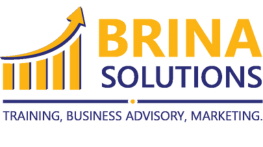
Driving traffic to your website is only half the battle in digital marketing. Turning those clicks into conversions—whether it’s a sale, a signup, or a lead—is the ultimate goal. Optimizing conversion rates requires strategic planning, user-centered design, and constant refinement to ensure that visitors are encouraged to take action.
In this blog post, we’ll explore essential strategies for moving users from clicks to conversions, offering insights into how to improve your website’s effectiveness and ultimately boost your bottom line.
1. Understand Your Audience and Define Your Conversion Goals
Before implementing any conversion optimization strategies, it’s essential to understand who your audience is and what you want them to achieve. Defining your conversion goals will guide your approach and ensure that your website is set up to achieve specific outcomes.
Key Conversion Goals:
- Sales: For e-commerce sites, a conversion may be a completed purchase.
- Leads: For service-based businesses, a lead form submission or contact request may count as a conversion.
- Signups: For SaaS or subscription-based businesses, a sign-up for a free trial or email list might be the main goal.
Tip: Use analytics tools, like Google Analytics, to segment your audience and understand their demographics, behaviors, and preferences. This insight will help you tailor your content, design, and offers for the highest chance of conversion.
2. Optimize Landing Pages for Clarity and Relevance
Your landing page is often the first impression a visitor has of your website, and it’s critical that it communicates the right message immediately. A clear, compelling landing page optimized for conversions can help you capture attention and guide users towards taking action.
Landing Page Optimization Tips:
- Compelling Headline: Your headline should be attention-grabbing and explain the value of your offer within seconds.
- Relevant Visuals: Use high-quality images or videos that support your message and showcase your product or service.
- Clear Call-to-Action (CTA): Make your CTA prominent and straightforward, using actionable language like “Get Started” or “Sign Up Now.”
- Limit Distractions: Avoid excessive links or navigation options that can divert users away from your main conversion goal.
Example: If you’re offering a free trial of your software, create a dedicated landing page that highlights the benefits of the trial, includes a “Try for Free” CTA, and keeps the design simple to reduce distractions.
3. Streamline Your Checkout Process
A lengthy or complicated checkout process is one of the top reasons why potential customers abandon their purchases. Optimizing your checkout process for simplicity and speed is crucial for e-commerce businesses aiming to boost conversion rates.
Tips for Checkout Optimization:
- Minimize Steps: Reduce the number of steps needed to complete a purchase to increase the likelihood of conversion.
- Offer Guest Checkout: Many users don’t want to create an account to make a purchase; offering a guest checkout can reduce friction.
- Add Trust Signals: Display security badges, payment options, and customer reviews to reassure users.
- Include Progress Indicators: Show customers how many steps are left to complete their purchase to prevent frustration.
Tip: Test your checkout process regularly to identify any areas where users may be dropping off. Tools like Hotjar or Google Analytics’ funnel analysis can help identify weak points in your checkout flow.
4. Personalize the User Experience
Personalization is a powerful way to make visitors feel understood and valued, which can significantly increase your conversion rates. By using data to personalize the user experience, you can tailor content, recommendations, and offers to match the needs and interests of individual visitors.
Effective Personalization Techniques:
- Dynamic Content: Use personalized content that adapts to the user’s location, preferences, or browsing history. For instance, an e-commerce site can show “Recently Viewed” items to encourage a return purchase.
- Product Recommendations: Display product suggestions based on past behavior, such as “You Might Also Like” or “Customers Also Bought.”
- Targeted Pop-Ups: Show specific offers or discounts to users based on their engagement level or the pages they visit.
Example: An online clothing store could display targeted product recommendations based on a user’s past purchases, or suggest similar items in their preferred style.
5. Craft Persuasive and Clear Calls-to-Action (CTAs)
Your call-to-action (CTA) is a critical element that encourages users to convert. A well-designed CTA uses action-oriented language, stands out on the page, and makes it clear what users will get when they click.
CTA Best Practices:
- Use Action-Oriented Language: Instead of generic text like “Submit,” use more specific wording, such as “Get My Free Guide” or “Start My Trial.”
- Make CTAs Stand Out: Use contrasting colors, bold fonts, or buttons to make your CTA eye-catching.
- Create Urgency: Use phrases like “Limited Offer” or “Ends Soon” to encourage quick action.
Tip: Test different CTAs to see which performs best. Simple tweaks, like changing the color or wording, can have a noticeable impact on conversion rates.
6. Leverage Social Proof and Testimonials
Social proof is a powerful motivator that reassures potential customers by showing that others have had a positive experience with your brand. Adding testimonials, reviews, and trust badges can help build credibility and encourage conversions.
Social Proof Elements to Include:
- Customer Reviews: Display reviews on product pages or below CTAs to build trust.
- Case Studies: Showcase case studies or success stories that demonstrate the value of your products or services.
- User-Generated Content: Share photos, videos, or testimonials from real customers.
Example: Many e-commerce sites include customer reviews directly on the product page, giving visitors the confidence to proceed with a purchase.
7. Conduct A/B Testing for Continuous Improvement
Optimizing for conversions is an ongoing process that requires testing and refinement. A/B testing (or split testing) allows you to test variations of your website elements—such as headlines, CTAs, or page layouts—and identify which version drives the highest conversion rate.
Elements to Test:
- Headlines: Experiment with different headlines to see which resonates most with your audience.
- CTAs: Test variations in CTA wording, color, or placement.
- Landing Page Layouts: Try different layouts to see which one keeps visitors engaged and leads to more conversions.
Tip: Use A/B testing tools like Google Optimize or Optimizely to create controlled experiments and gather data-driven insights.
8. Optimize for Mobile Users
With more consumers shopping and browsing on mobile devices, mobile optimization is essential for improving conversion rates. A responsive, user-friendly mobile experience can significantly reduce bounce rates and increase the likelihood of conversion.
Mobile Optimization Tips:
- Responsive Design: Ensure that your website adjusts seamlessly across devices, from desktops to smartphones.
- Simplify Navigation: Mobile screens are smaller, so make navigation easy with a clean layout and clear buttons.
- Mobile-Specific CTAs: Use large, clickable CTAs designed specifically for touchscreens.
Example: A mobile-friendly online store might display a sticky “Buy Now” button at the bottom of the screen, allowing users to take action without scrolling.
9. Build Trust Through Transparency
Establishing trust with users can be a significant factor in improving conversions. Transparent communication about policies, pricing, and customer support makes users feel more comfortable and encourages them to convert.
Trust-Building Techniques:
- Clear Pricing and Shipping Information: Include clear, upfront information on shipping costs, delivery times, and return policies.
- Display Trust Badges and Security Certificates: Adding security badges (like SSL) reassures customers that their information is safe.
- Accessible Customer Support: Offer multiple ways for customers to contact support, such as live chat, email, or phone.
Tip: Show a visible link to your privacy policy and terms of service to give customers added peace of mind.
Conclusion: Turning Clicks into Conversions
Optimizing conversion rates is essential for turning website visitors into loyal customers. By understanding your audience, streamlining the user experience, and leveraging trust signals, you can guide users down the conversion funnel and increase your business’s bottom line. Remember that conversion rate optimization is an ongoing process, so regularly test and refine your approach to achieve the best results.
Call to Action:
Ready to boost your website’s conversions? Brina Solutions specializes in conversion rate optimization strategies that help businesses drive sales and grow. Contact us today to learn more!







Leave a Reply